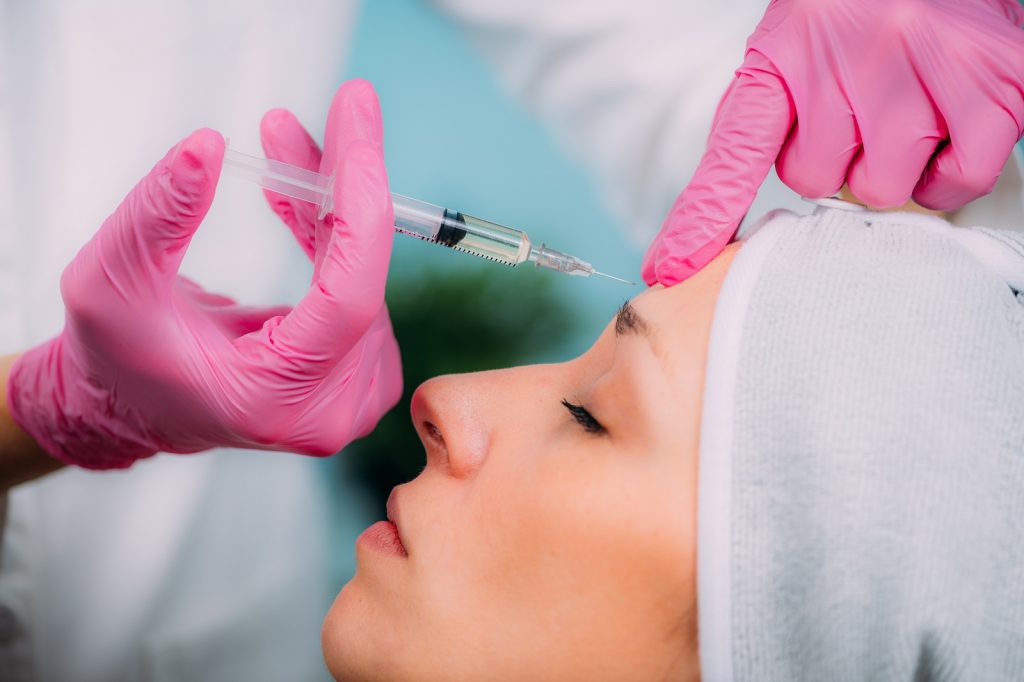Fillers & Injectables Treatment in Lahore
The world of beauty and skincare is constantly evolving, and it seems like there’s always a new treatment or procedure to try. While Botox has been a popular choice for those looking to reduce the appearance of fine lines and wrinkles, there are now several new options available in the world of fillers and injectables.
From dermal fillers that plump and hydrate the skin to injectables that help contour and sculpt the face, there’s a whole world of possibilities beyond Botox. In this article, we’ll explore some of the latest trends in fillers and injectables, highlighting their benefits and potential drawbacks. Whether you’re considering a new treatment or simply curious about the latest developments in the beauty industry, read on to discover what’s new and exciting in the world of fillers and injectables.

The Rise of Fillers and Injectables in the Beauty Industry
Over the past few decades, fillers and injectables have become an increasingly popular choice for those looking to enhance their appearance. According to the American Society of Plastic Surgeons, the number of injectable treatments performed in the United States has increased by 40% since 2010. This rise in popularity can be attributed to several factors, including increased awareness of these treatments and their benefits, a growing desire to maintain a youthful appearance, and advancements in technology that have made these treatments safer and more effective than ever before.
While Botox has been the go-to treatment for reducing the appearance of fine lines and wrinkles, there are now several new options available that offer a range of benefits beyond what Botox can provide. These treatments can be used to address a variety of concerns, from sagging skin to volume loss, and can help to create a more youthful, refreshed appearance.
Understanding the Different Types of Fillers and Injectables
Before we dive into the latest trends in fillers and injectables, it’s important to understand the different types of treatments available. There are two main categories of injectables: neurotoxins and dermal fillers. Neurotoxins, such as Botox and Dysport, work by temporarily paralyzing the muscles that cause wrinkles, while dermal fillers work by adding volume to the skin to smooth out wrinkles and lines.
Within these two categories, there are several different types of treatments available. Some of the most popular dermal fillers include Juvederm, Restylane, and Sculptra. Each of these fillers is made up of a different substance and is designed to address specific concerns. For example, Juvederm is made up of hyaluronic acid, a naturally occurring substance in the body that helps to hydrate and plump the skin, while Sculptra is made up of poly-L-lactic acid, which helps to stimulate collagen production in the skin.
In addition to dermal fillers, there are also injectables that can be used for contouring and sculpting the face, such as Kybella, which is used to reduce the appearance of a double chin. These treatments work by dissolving fat cells in the targeted area, creating a more contoured appearance.
Benefits of Different Types of Fillers and Injectables
While fillers and injectables can offer a range of benefits, it’s important to understand that there are potential drawbacks as well. Some of the benefits of these treatments include:
- Immediate results: Many fillers and injectables offer immediate results, allowing you to see the effects of the treatment right away. This can be particularly appealing for those looking for a quick fix.
- Non-invasive: Unlike surgical procedures, fillers and injectables are non-invasive and require little to no downtime. This can be a major selling point for those who want to avoid the risks and recovery time associated with surgery.
- Customizable: Because there are so many different types of fillers and injectables available, it’s possible to customize the treatment to address your specific concerns.
Factors to Consider Before Getting Fillers and Injectables
Before getting any cosmetic treatment, it’s important to consider several factors, including the cost, recovery time, and potential risks. Fillers and injectables can be expensive, particularly if you require multiple treatments to achieve your desired results. In addition, some treatments may require a period of downtime, during which you may experience swelling or bruising. And while fillers and injectables are generally considered safe, there are potential risks to consider, such as allergic reactions or infection.
When considering a treatment, it’s important to discuss these factors with your provider and make an informed decision based on your individual needs and concerns.

Latest Trends in Fillers and Injectables
As the beauty industry continues to evolve, there are always new treatments and procedures to try. Some of the latest trends in fillers and injectables include:
- Micro-needling: This treatment involves using a device with tiny needles to create micro-injuries in the skin, which stimulate collagen production and improve the overall texture and tone of the skin.
- Thread lifts: This treatment involves inserting threads under the skin to lift and tighten sagging skin. This treatment can be used on the face, neck, and body.
- PRP therapy: This treatment involves using platelet-rich plasma from your own blood to stimulate collagen production and improve the overall health and appearance of the skin.
Fillers and injectables can offer a range of benefits, from reducing the appearance of fine lines and wrinkles to adding volume and contouring the face. However, it’s important to make an informed decision before choosing a treatment, taking into account factors such as cost, recovery time, and potential risks. By finding a qualified provider, asking the right questions, and considering the latest trends in fillers and injectables, you can ensure that you’re getting the best possible results from your treatment.